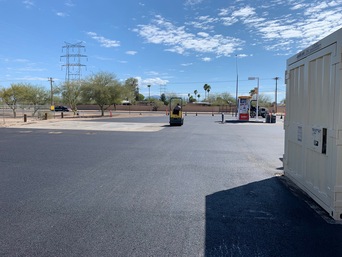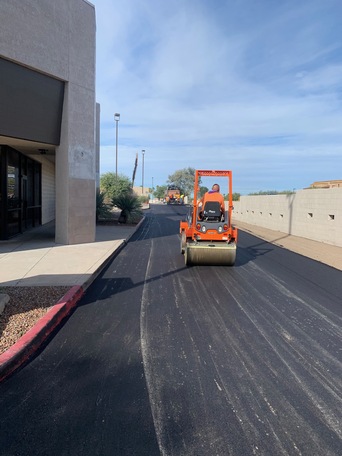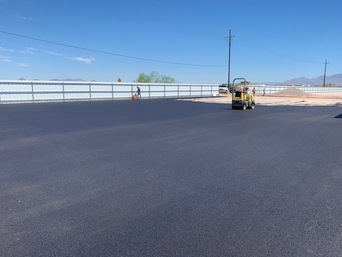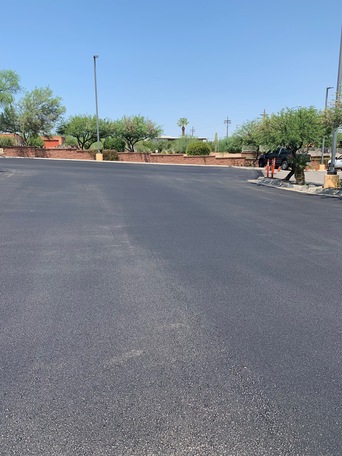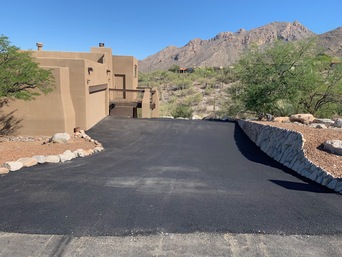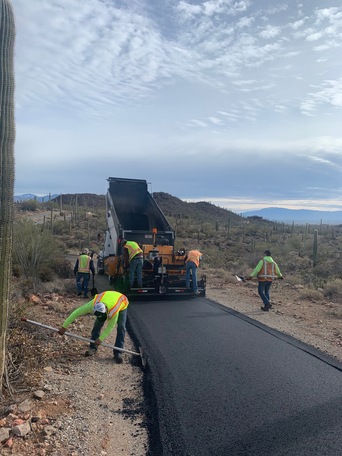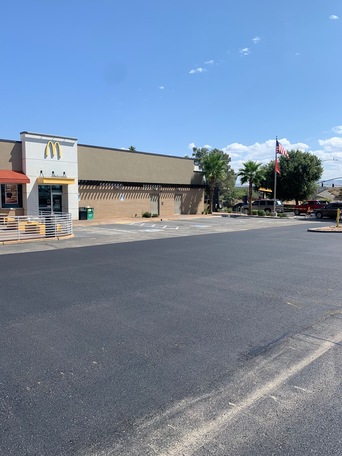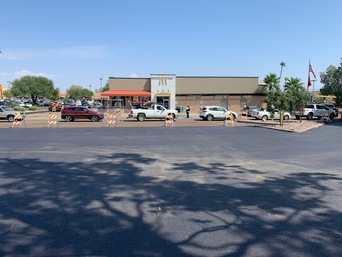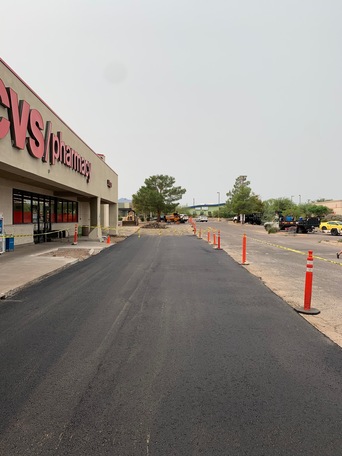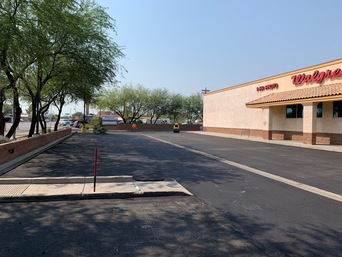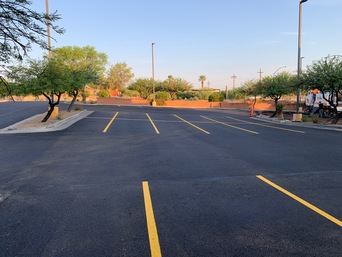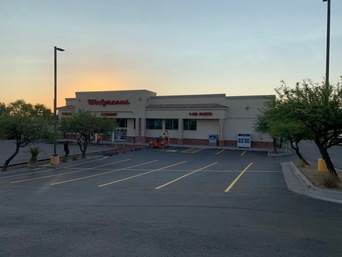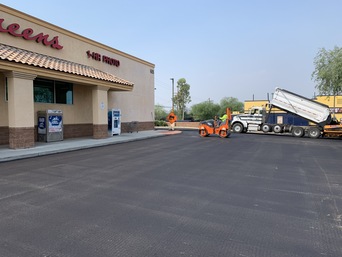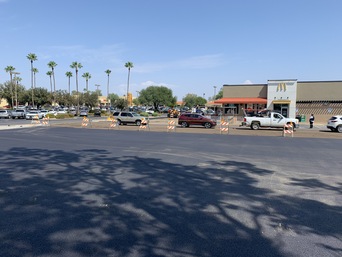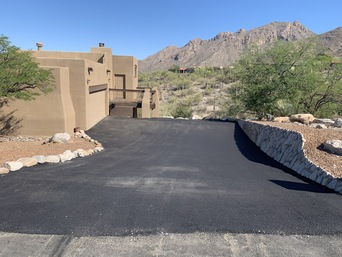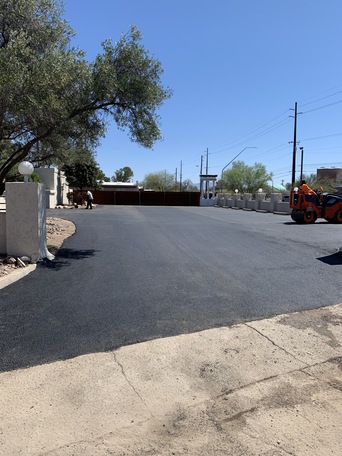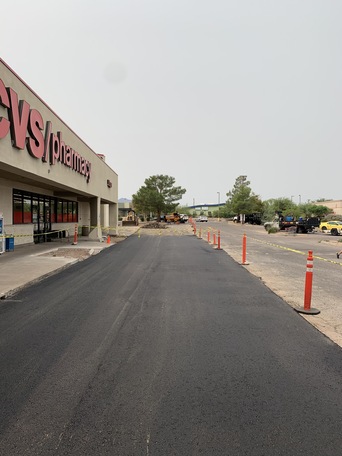Let Us Take Care of Your Next Paving Job
Sometimes repeated maintenance just isn’t the answer and the solution is a new paving lot or driveway. There are two ways to go about this.
OVERLAY
This is the process of first skin patching or removing and replacing any troubled areas. Once that’s done a layer of SS1-H oil is applied to help the new surface bond to the old. Quantities of asphalt are ordered and a paving machine lays down the new asphalt. At a minimum a layer of 1½ inches is laid but depending on use can be more.
When to Install Asphalt Overlay
- The pavement must be structurally intact.
- It must be able to withstand repairs, crack filling and smoothing, and cleaning prior to having a fresh layer of asphalt applied.
- There must be a minimum thickness of existing asphalt.
The Asphalt Overlay Process
There are four steps to installing an asphalt overlay: inspection, milling, repair, and paving.
Inspection
Before anything else can happen, a thorough assessment of the asphalt surface is necessary. Not all asphalt is suitable for an overlay, especially those that have extensive damage! If the asphalt has large potholes, ruts deep in the surface, or root damage that is a no go. Another indicator of asphalt that isn’t ready for an overlay is if it isn’t draining water like it should. That points to a problem below the surface that may require more extensive work like regrading to handle water correctly.
Once the inspection is handled and the overlay is okayed the next step is asphalt milling.
Asphalt Milling
Asphalt milling is when we remove the top most layer of the asphalt, the portion that has cracked, begun ravelling, or other damage. Removing the old, damaged layer ensures that the new asphalt is able to bond correctly and keep a level surface. Typical milling will go down an inch to three inches of asphalt, depending on the damage.
Don’t worry, this old asphalt won’t go to waste! The milled material can be taken to an asphalt recycling plant to be repurposed and used in future asphalt mixes. Now that the surface has been removed, it’s time to take a look at the base.
Repair the Base
Once the damaged top layer has been removed it may be necessary to repair some of the base. In instances where potholes or rutting had begun to form, the base may need to be rebuilt to create a better surface for the new asphalt to bind to. This may mean reworking the foundation, getting more aggregate or a few other things, but so long as the base is tended to work can continue. With the base repaired the asphalt can now be overlaid.
Apply the Overlay
The overlay of fresh asphalt can now be paved! Paving overlays is no different from paving most asphalt. Depending on the thickness of the remaining pavement surface the asphalt layer may be thicker or thinner, whatever it takes to adequately repair the surface! Using an asphalt paver like our LeeBoy 8500, we spread a fresh top layer of asphalt over the existing structure and bingo! You have a great looking stretch of asphalt for much less work!
NEW PAVE (FULL DEPTH)
This process involves first removing the existing asphalt and taking it to the landfill for recycling. Next the parking lot or driveway is re-graded and re-compacted. Last step is laying hot asphalt with a paving machine and compacting it with heavy duty rollers. Minimum thickness for full depth re-paving is two inches.

